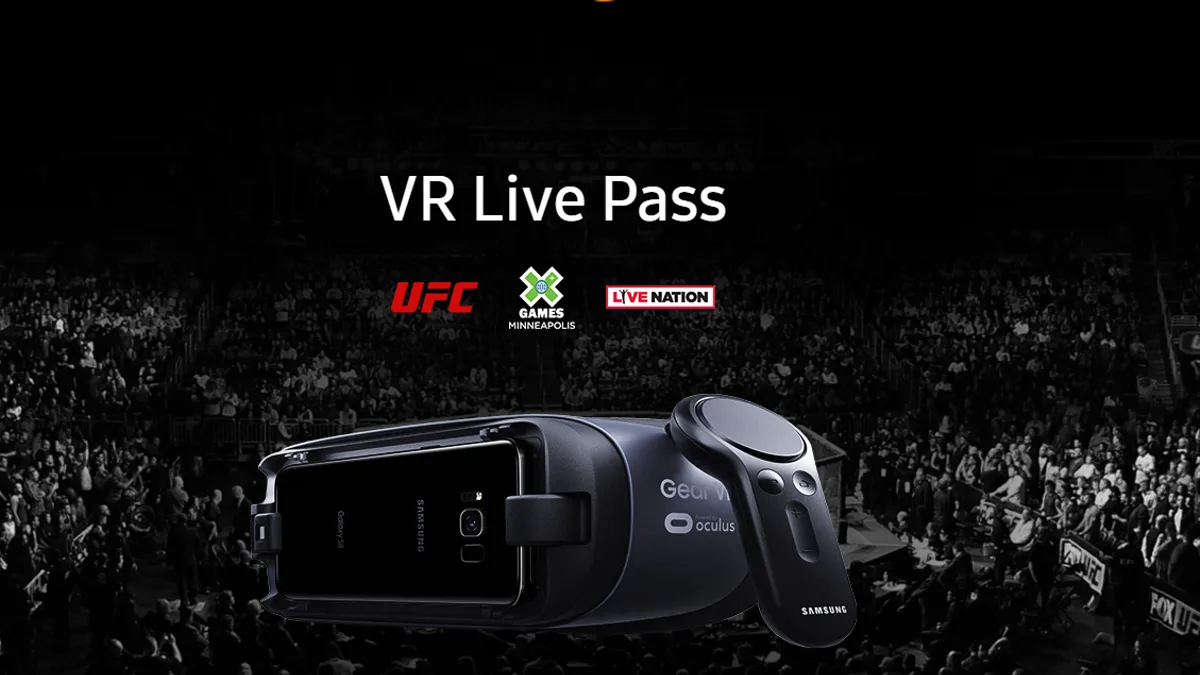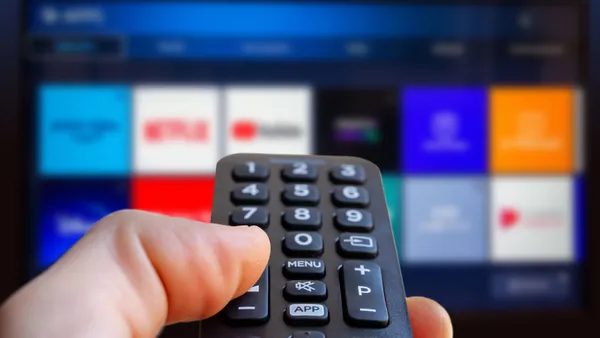Dive Brief:
- In a move to increase the amount of virtual reality (VR) entertainment content available, hardware company Samsung announced a broadcasting slate from sports and live entertainment groups including the UFC, X Games and Live Nation, per a Samsung press release.
- The VR live content initiative begins on June 3 with the UFC Featherweight Championship fight between José Aldo and Max Holloway from Rio de Janeiro. Samsung will broadcast from the X Games in Minneapolis July 13 – 16. At an unspecified event in August, the company announced music fans “will get the best seats in the house” to watch a major Live Nation music artist perform live. All three broadcast events are available through Samsung’s VR Live Pass.
- Samsung has previously engaged in VR content entertainment partnerships including working with NBC last year for VR coverage of the Rio Olympic Games as well as a deal with Six Flags to place VR roller coasters in its amusement parks.
Dive Insight:
VR tech has been hyped for decades, but in recent years computing power has improved while hardware costs have come down, making VR much more of a reality fo consumers. Samsung has a vested interest in VR's success as its Gear VR headset is one of the more cost-effective models. In fact, consumers who bought Samsung’s latest smartphone models in March were given a Gear headset and controller as a way to get more VR headsets in use.
A key VR challenge has been content, with gaming the most natural fit while entertainment has been lagging. Samsung's push into live VR content is clearly an attempt to drive interest and use for the technology. While marketers are anticipating how VR will fit into overall marketing strategies and content plans, the reality is most consumers are going to require more familiarity with the tech before marketers can really make a VR splash. Two areas that have been cited as early fits for VR experiences include retail, such as IKEA’s virtual kitchen, and B2B marketers using VR to provide more immersive product demonstrations.
Even though VR is still in an infancy that has lasted for years, industry forecasts see it as heading toward a critical mass of adoption. Last October, Juniper Research predicted VR hardware – including headsets, peripherals, and 360 cameras – spending will reach $50 billion by 2021, up from $5 billion last year.














